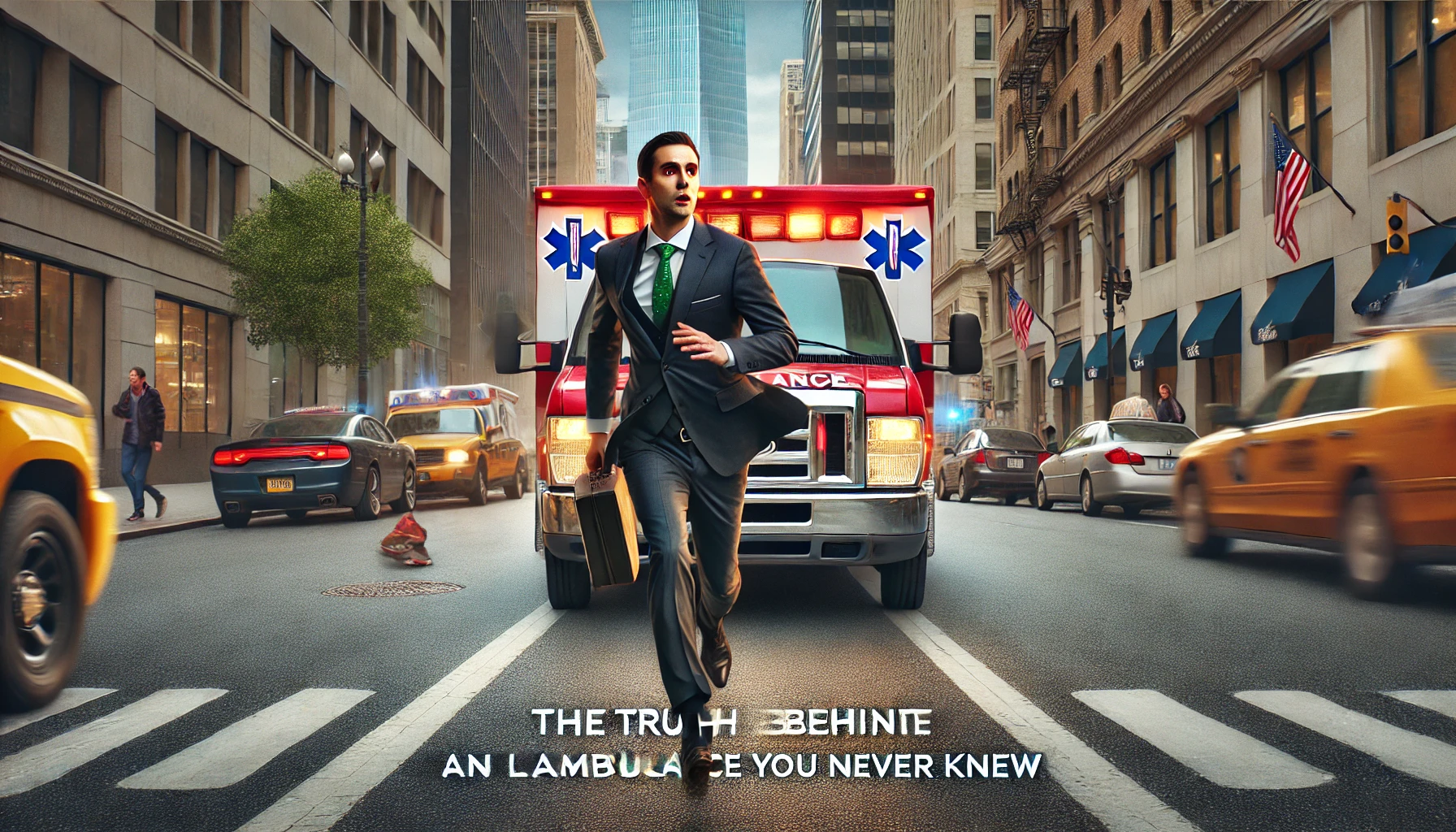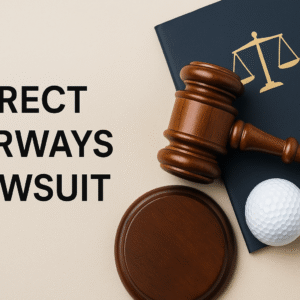Introduction: Capturing the Imagination
When you think of personal injury attorneys, what image comes to mind? For many, it’s the visual of a lawyer chasing an ambulance, ready to represent accident victims before they even leave the scene. This image is both humorous and controversial, as it plays into the stereotype that some lawyers are overly aggressive in finding new clients. But this idea didn’t come from nowhere—there’s a reason it feels so familiar and often triggers strong emotions in people.
The concept of “create an image of a lawyer chasing an ambulance” goes beyond a simple metaphor. It brings up feelings of discomfort for those who believe that some lawyers are only out for profit. For others, it might be a way to laugh at the absurdity of the situation. Either way, this image has deeply influenced how people view certain lawyers, especially in the world of personal injury law.
But why is this metaphor so powerful? And what does it tell us about how lawyers are perceived? To answer these questions, let’s dive deeper into the roots of this stereotype and its lasting impact on both the public and legal professionals.
1. The Origins of the “Ambulance Chasing” Image
The “ambulance chasing” image has deep roots in public perception, shaped over time by media portrayals and shared anecdotes. It originated from stories of lawyers rushing to accident scenes to approach victims, offering their legal services before they even had time to process what happened. These stories, whether true or exaggerated, created a lasting stereotype of certain lawyers as being predatory in their pursuit of clients.
For victims, this image can stir up feelings of vulnerability. Imagine being in a car accident, injured and frightened, only to have a lawyer approach you before medical help arrives. This could leave victims feeling like commodities, rather than people deserving of care and compassion. This emotional impact is why the image resonates so strongly and has such negative connotations.
The fine line between aggressive marketing and ethical legal conduct is at the center of this controversy. While lawyers need to attract clients, there’s a delicate balance between being proactive and being seen as exploitative. Ethical lawyers know the importance of maintaining professional boundaries while still advocating for those in need, whereas crossing that line tarnishes the entire profession’s reputation.
2. Why This Image Feels So Real: The Psychology Behind the Stereotype
The image of a lawyer chasing an ambulance stirs up a range of strong emotions—from anger to frustration and sometimes even humor. This is because it touches on something deeper in the human psyche: a distrust of those who appear to take advantage of others’ misfortune for personal gain.
People often feel anger toward what they see as opportunistic legal behavior. The idea that a lawyer might be lurking around a crisis, ready to offer services before the dust settles, makes people uncomfortable. It feeds into a fear that some lawyers care more about their own profits than about helping those in need.
This stereotype also taps into skepticism about the legal profession as a whole. Many see lawyers as professionals who will say or do anything to win cases, making people question their motives. This leads to feelings of frustration, as people wonder whether they can trust the lawyers they encounter, especially in situations involving personal injury.
However, there’s also an element of humor in this image. The exaggeration of a lawyer literally running after an ambulance creates a scene so absurd that it’s almost funny. This dark humor allows people to laugh at the ridiculousness of the stereotype, even though the underlying issues—such as the seriousness of legal proceedings—are far from funny. This blend of emotions makes the image memorable and powerful, sticking in people’s minds long after they’ve seen or heard it.
3. The Real-Life Impact: How Some Lawyers Have Contributed to This Image
The stereotype of the ambulance-chasing lawyer didn’t emerge out of thin air. Over the years, some lawyers and law firms have indeed crossed ethical lines, contributing to this negative image. Real-world examples of attorneys engaging in aggressive solicitation, often at the scene of accidents, have made headlines and created lasting damage to the reputation of the legal profession.
In several cases, lawyers have been disciplined for their actions. For instance, certain personal injury lawyers have been fined or suspended for soliciting clients at hospitals or accident sites. This behavior reinforces the idea that some lawyers are more interested in profit than in helping clients during their most vulnerable moments. Victims in these situations often feel a deep sense of discomfort or even outrage. Imagine being in shock after an accident, only to be approached by a lawyer before you’ve even received medical attention—it can feel like you’re being exploited rather than supported.
These incidents only serve to reinforce negative feelings toward certain legal practices, making people skeptical of personal injury lawyers in general. When victims experience this type of behavior, they’re left wondering if they can truly trust the legal profession. This is why maintaining integrity is crucial for lawyers. Trust is the foundation of the attorney-client relationship, and once it’s broken, it’s hard to rebuild. Ethical lawyers understand this and strive to build long-term trust with their clients, proving that the profession is about justice and support, not just profit.
The importance of trust in law cannot be overstated. When clients believe their lawyer is acting in their best interests, they feel more secure and respected, which is what every accident victim deserves.
The Power of a Constitutional Lawyer: Defending Your Rights and Shaping History
4. The Emotional Impact of the “Ambulance Chaser” Label on Lawyers
For ethical lawyers in personal injury law, the “ambulance chaser” label can be deeply frustrating. Many attorneys work tirelessly to help clients through some of the most difficult moments of their lives, yet they are often unfairly painted with the same brush as those who have engaged in unethical practices. This misunderstanding can take an emotional toll on honest attorneys who are simply trying to do their job with integrity.
These lawyers often feel stigmatized by the stereotype, which makes it challenging to build relationships with new clients. Imagine spending years developing a reputation as a trustworthy advocate, only to be met with skepticism or even disdain because of a label that has nothing to do with your individual behavior. This can create a sense of isolation, as ethical lawyers struggle to separate themselves from the negative perceptions that the image of the ambulance chaser creates.
Maintaining credibility and professional respect in this environment is not easy. Lawyers in this field often face an emotional struggle, as they must continually prove themselves to their clients, peers, and the public. Every interaction becomes a balancing act of reassuring clients that they are there to help, not exploit.
This stereotype also affects how clients perceive trust. Even a hint of suspicion can cause a potential client to question whether their lawyer truly has their best interests at heart. As a result, the reputation of all legal professionals suffers, as people become hesitant to seek legal help, fearing they might fall into the hands of a so-called ambulance chaser. For ethical attorneys, overcoming this emotional barrier is an ongoing challenge, but many strive to build strong, trusting relationships with their clients by demonstrating genuine care and compassion.
5. Breaking Away from the Stereotype: The Reality of Ethical Personal Injury Lawyers
While the ambulance-chasing lawyer stereotype grabs attention, the reality for many personal injury lawyers is far more positive. Ethical lawyers work tirelessly to support their clients, often building relationships rooted in trust and compassion. These lawyers understand that clients are going through some of the hardest moments of their lives, and they approach their work with a deep sense of responsibility and care.
Rather than aggressively pursuing clients, ethical personal injury lawyers take the time to understand each client’s needs, fears, and challenges. They focus on creating an atmosphere of trust where clients feel safe sharing their experiences and concerns. By building these strong relationships, ethical attorneys help their clients feel supported and respected during legal proceedings, knowing they have someone truly on their side.
In addition to their professional skills, these lawyers provide significant emotional comfort to accident victims. They offer more than just legal advice—they act as guides during moments of uncertainty, helping clients navigate both the legal system and the emotional stress that often follows an accident. By being compassionate and available, ethical lawyers help victims feel less alone and more in control of their situations.
There are countless real stories of compassionate and trustworthy lawyers who have made a meaningful difference in their clients’ lives. These attorneys have helped accident victims recover with dignity, ensuring they receive the justice and compensation they deserve while maintaining honesty and integrity. These stories remind us that, far from the stereotype of the ambulance chaser, many personal injury lawyers are committed to doing good for their clients, working ethically and with kindness.
Conclusion: The Power of Images and Stereotypes
The metaphor of a lawyer chasing an ambulance is undeniably powerful and emotionally charged. It plays on our deepest fears about being exploited in vulnerable moments, and it sticks in our minds because of its vivid imagery. However, this stereotype doesn’t reflect the reality of most lawyers who work in personal injury law. While there are a few who may have contributed to this negative perception, the majority of attorneys approach their clients with empathy, care, and professionalism.
It’s important to look beyond the stereotype and recognize the valuable role that ethical lawyers play in society. Many attorneys dedicate their careers to helping people recover from life-altering accidents, acting as both legal advocates and emotional supports. These lawyers operate with integrity, working to build trust and deliver justice for those who need it most. By focusing on the positive contributions of personal injury lawyers, we can shift the narrative from one of exploitation to one of compassion and justice.
FAQs
Why is ambulance chasing bad?
Ambulance chasing is viewed negatively because it involves lawyers soliciting clients immediately after accidents, often when victims are at their most vulnerable. This behavior can make people feel exploited and lead to distrust toward the legal profession.
Is ambulance chasing ethical?
No, ambulance chasing is considered unethical by most legal standards. Lawyers who engage in aggressive solicitation are often violating professional codes of conduct that emphasize integrity and respect for potential clients.
What does an ambulance chaser mean?
An ambulance chaser is a slang term used to describe lawyers who seek out accident victims to offer legal services, usually in a way that is seen as exploitative or opportunistic.
Why would a cop follow an ambulance with lights on?
A police officer may follow an ambulance with lights on if they are responding to the same emergency or if there is an investigation that needs to take place at the scene. It can also be to provide support and safety during transportation.
Is ambulance chasing illegal in California?
Yes, ambulance chasing is illegal in California. The state has strict laws prohibiting lawyers from soliciting clients at accident scenes or through direct contact soon after an accident. Violating these laws can lead to disciplinary action against the lawyer.
Discover the Attorney realm with The Expert Law. Visit our website for endless inspiration!





